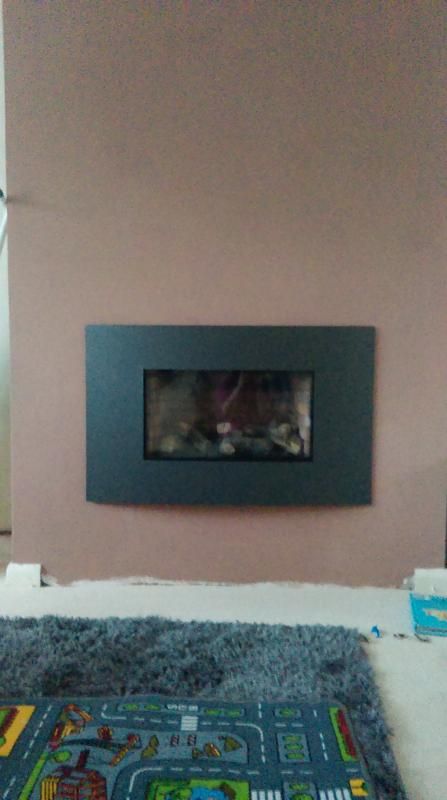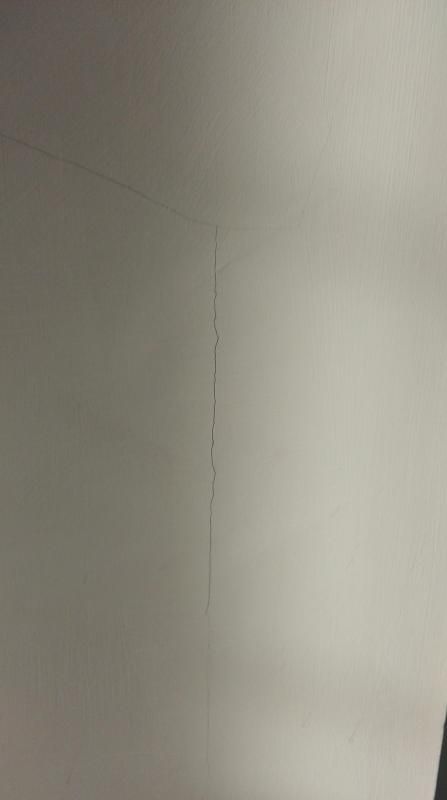We’d like to remind Forumites to please avoid political debate on the Forum.
This is to keep it a safe and useful space for MoneySaving discussions. Threads that are – or become – political in nature may be removed in line with the Forum’s rules. Thank you for your understanding.
The MSE Forum Team would like to wish you all a Merry Christmas. However, we know this time of year can be difficult for some. If you're struggling during the festive period, here's a list of organisations that might be able to help
📨 Have you signed up to the Forum's new Email Digest yet? Get a selection of trending threads sent straight to your inbox daily, weekly or monthly!
Has MSE helped you to save or reclaim money this year? Share your 2025 MoneySaving success stories!
Fire place cracked plaster
Comments
-
Not really got any advice but thought I'd try and help a little


 0
0 -
As I thought, a landscape glass fronted hole in the wall fireplace. You do find cracking on nearly every one of this type of fire you fit.
If I am not mistaken it is a Gazco Riva, a good fire but very hot.Either that or one of the many rip off versions from other makes. The engine housing gets incredibly hot and if the blockwork directly in front of the flue is not deep enough, heat transference from the flue will come through and crack newly done plaster.
You can have a go with the plaster again, but I would always recommend to customers buying this type of product that they either use the fibreglass wallpaper, or have a set of granite slips put around the fireplace at the time of fitting, which will give the fire a bit of a buffer for the plaster.
The wallpaper is cheaper and will sort any issues out in the future.
The temperature of the flue gases in the vicinity of the opening for the fire ( where your new plaster work starts) will be in excess of 200 deg c, so you can see why it could be cracking.
It is one of those things, it can happen and really is no ones fault, all you can do is try and get it sorted, so you have a worry free use in future.
Finally word of advice, you will already be aware of it most likely. That glass is going to get very hot and I se a play mat on the floor in the pic. Get a good nursery guard to go in front of it ASAP if you have not got one already. A child having an incident with a glass fronted fire is 1000 times worse than an open fronted one. You may get a burnt finger with an open fronted fire, you will lose all the skin with a glass fronted one. Just thought I would reiterate the warning given in the user guide.0 -
Hi Rusty,
Thanks so much for the advice, I'll keep it in mind when talking to the company, and also look into the wallpaper, as we definitely don't want any more cracks to show.
We definitely have a fireguard for the fire, we just took it off for the photos, and it's back on now. We have a two-year old who likes to run around, and we'll be keeping an extra eye on him whenever it's on.
If Plasterer comes back to the thread, I would be grateful if they could confirm whether this is a casette-type fireplace, and whether any fire regulations have been contravened. That would be very concerning, as I thought we were dealing with a legitimate company - one of the few in our area.0 -
It is a cassette type fire that's for sure, but you shouldn't have any issues with contravening regs. It is just that the possibility is that the plaster is not up to the high temperatures the fire will create.
Glass fronted fires, as I have said are super efficient, but their downfall is that they are so efficient that the high temperatures stay in the vicinity of the fireplace so much more than an open fronted one, which will have a lot of the heat pulled up the flue faster through natural draw.
When I sell a fire to someone who has a precast or prefab flue, especially if the house is from the 70's and a party wall with next door, I always try to sell them an open fronted one instead. If they are adamant they want a glass fronted one, then I make them have slips around the fire as a buffer against the heat on the plaster, or in a fireplace with the backpanel split into 3 pieces, as they get hot enough to actually split marble through expansion. 1970's flues are notoriously shallow and usually so near the plasterwork that the whole chimney breast can get boiling, hence the plaster cracking.
It looks like the installer has done a decent job, it is just that you have hit the curse of the fresh plaster meets glass fronted fire story. You are not the first, certainly wont be the last.0 -
Hi Skinny87
As per your photos - around the "cassette" fireplace will always crack no matter how many times you repair it. The ONLY way to remedy and guarantee no future cracking is to use the victas fire resistant plaster as mentioned before (don't worry im not a victas saleman - in fact although I can and do use the product I hate it with a passion as it trowels up like no other plaster, a bit like trying to trowel bubble gum!!!)
Its common knowledge with fire fitting companies that this product is available, and really they should be telling you about it.
As from contravening building regs - slight grey area, just I know the three stove fitting companies I plaster for will not fit a fire unless the surrounding plaster is fire resistant. I don't want to alarm you, but if your fire breast is dot and dabbed ie plaster boarded and then skimmed, the board can actually catch fire.
Ill upload some pictures when I get five minutes to find them of some examples0 -
Hi, I know this is an old thread but I was just wondering how people are getting on? I am experiencing a similar problem with the surrounding crack and area getting ridiculously hot around the fire. I had the fitter round today and he pulled the fire out and checked everything which looks fine. From what I can gather this looks to be a common problem. I called the fireproof wallpaper people and they have recommended MicroLith GS202 wall liner. Has anyone used this? The plasterer we used must have used some kind of fire proof plaster surely? Unfortunately it was 2 years ago now, we just hardly every use the fire .....0
-
Me too as I'm just rebuilding my chimney breast for a new wood burner and I was intending to dot & dab!PieMistress wrote: »Hi, I know this is an old thread but I was just wondering how people are getting on? .
In my case, the fire will be free standing inside a painted galvanised enclosure with a slate hearth and limestone surround. The wall will be standard brickwork, only one brick thick above the fire and the flue will be in standard 5" stainless steel.
The old fire I took out was set forward and the flue went in front of the mantel and then through the wall above it. Not surprisingly, the plaster cracked all the way around the entry point. I had hoped that using a flue going straight up through the register plate that the surrounding brickwork & plaster wouldn't get too hot.
Am I right?0 -
Installed a cassette style wood burner at the beginning of the year. During the course of plastering, several thermocouples were embedded in the wall (because I had some, and it seemed like a good idea). Quite often, the wall is reaching 120°C some 6" above the stove and 70°C a couple of feet further up.
The wall (single thickness brick) has been plastered with Ever Build's heat resistant plaster and then skimmed with a thin layer of lime plaster (Kreidezeit Smooth Lime Wall Finish) - One year (almost) on, I have just one very fine hairline crack that can only really be seen with the aid of a magnifying glass. The plasters were not cheap, but I feel it well worth the expense compared to having to plaster annually.
For comparison, a friend has an inset wood burner with gypsum plaster over a layer of ordinary cement render - The whole lot is flaking off the wall within a foot or so of the fire and there are visible cracks all the way up the chimney breast. Sometime next spring, we will be taking it back to bare brick and redoing it with a lime plaster.
Gypsum plaster will only cope with temperatures up to 50°C and may well crack below this. There are heat resistant cement boards available, and I think I've seen vermiculite panels somewhere - They may well survive the high temperatures but could crack along any joints depending on how you finish them.
Tiles could also work but you will need to use a heat resistant adhesive or run the risk of seeing them fall off the wall.Any language construct that forces such insanity in this case should be abandoned without regrets. –
Erik Aronesty, 2014
Treasure the moments that you have. Savour them for as long as you can for they will never come back again.0
This discussion has been closed.
Confirm your email address to Create Threads and Reply

Categories
- All Categories
- 352.9K Banking & Borrowing
- 253.9K Reduce Debt & Boost Income
- 454.7K Spending & Discounts
- 246K Work, Benefits & Business
- 602.1K Mortgages, Homes & Bills
- 177.8K Life & Family
- 259.9K Travel & Transport
- 1.5M Hobbies & Leisure
- 16K Discuss & Feedback
- 37.7K Read-Only Boards



